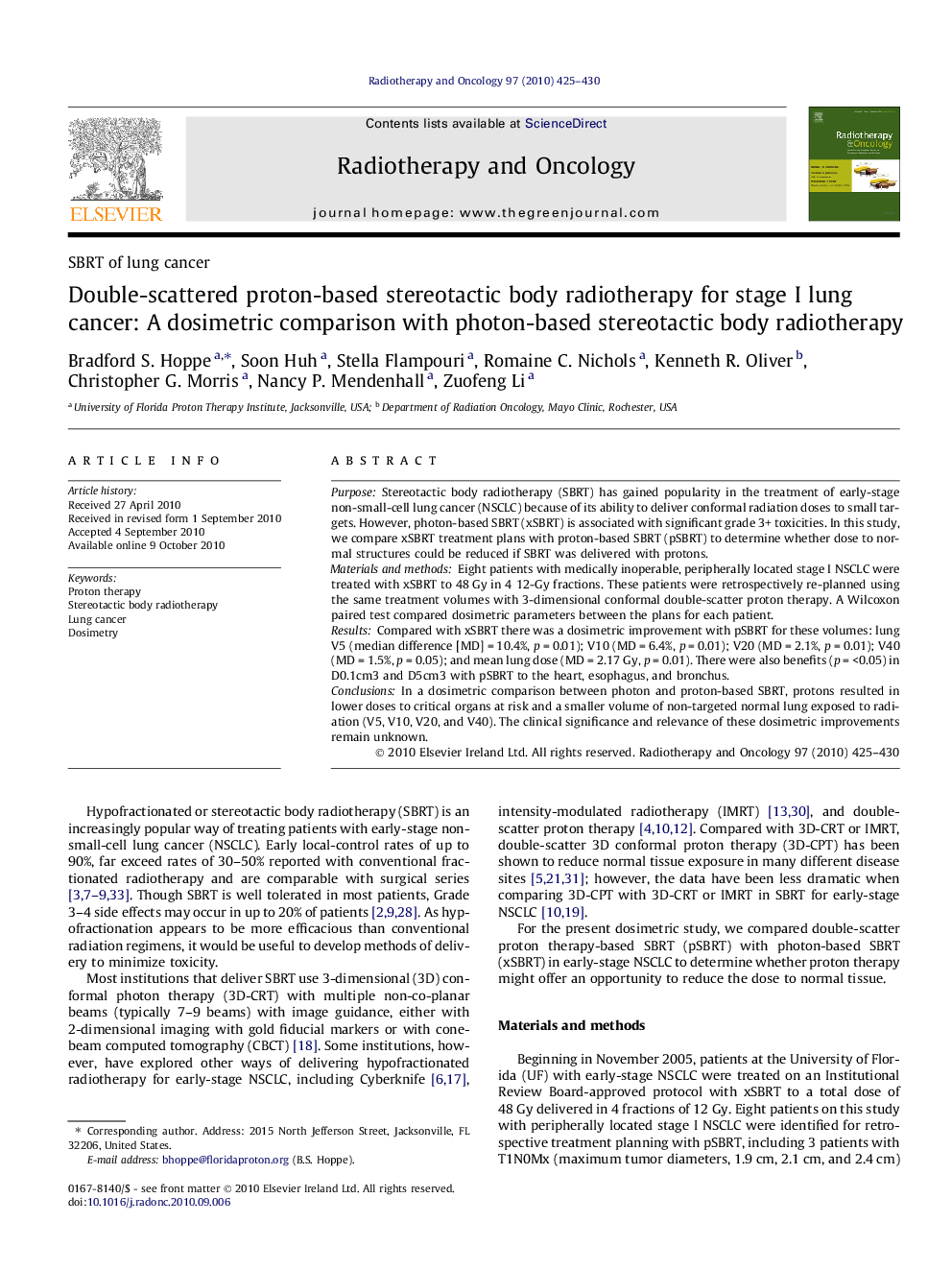| Article ID | Journal | Published Year | Pages | File Type |
|---|---|---|---|---|
| 2159193 | Radiotherapy and Oncology | 2010 | 6 Pages |
PurposeStereotactic body radiotherapy (SBRT) has gained popularity in the treatment of early-stage non-small-cell lung cancer (NSCLC) because of its ability to deliver conformal radiation doses to small targets. However, photon-based SBRT (xSBRT) is associated with significant grade 3+ toxicities. In this study, we compare xSBRT treatment plans with proton-based SBRT (pSBRT) to determine whether dose to normal structures could be reduced if SBRT was delivered with protons.Materials and methodsEight patients with medically inoperable, peripherally located stage I NSCLC were treated with xSBRT to 48 Gy in 4 12-Gy fractions. These patients were retrospectively re-planned using the same treatment volumes with 3-dimensional conformal double-scatter proton therapy. A Wilcoxon paired test compared dosimetric parameters between the plans for each patient.ResultsCompared with xSBRT there was a dosimetric improvement with pSBRT for these volumes: lung V5 (median difference [MD] = 10.4%, p = 0.01); V10 (MD = 6.4%, p = 0.01); V20 (MD = 2.1%, p = 0.01); V40 (MD = 1.5%, p = 0.05); and mean lung dose (MD = 2.17 Gy, p = 0.01). There were also benefits (p = <0.05) in D0.1cm3 and D5cm3 with pSBRT to the heart, esophagus, and bronchus.ConclusionsIn a dosimetric comparison between photon and proton-based SBRT, protons resulted in lower doses to critical organs at risk and a smaller volume of non-targeted normal lung exposed to radiation (V5, V10, V20, and V40). The clinical significance and relevance of these dosimetric improvements remain unknown.
